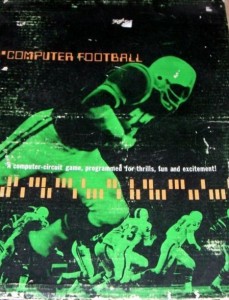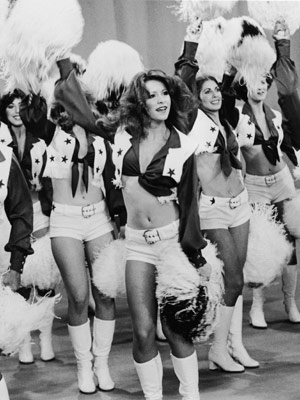I’ve mentioned before that Tom Landry, legendary coach of the Dallas Cowboys, was computer savvy in the 1970s (here and here), but the team’s faith in AI stretches back a decade prior, when original GM Tex Schramm invested in some hardware to help crunch numbers for the draft, hoping to remove confirmation bias and other human negatives from the equation. The opening of “Make No Mistakes About It,” Tex Maule’s 1968 Sports Illustrated article:
“The best computer in the world today is a small machine about the size and consistency of a ripe cantaloupe. It can digest, evaluate and extrapolate more data than the most sophisticated hard-metal device yet evolved and can do it quicker and better. The huge computer complex—a machine that takes up more than a thousand feet of floor space—has one advantage over the little one. It has a better memory.
Both types of machine are used in modern professional football, and next week they will be working overtime as the combined National and American football leagues meet to draft this year’s crop of eligible players. The little machines—the cantaloupes—rest in the skulls of the coaches and scouts of the game. The big one—the computer machine—accepts the data given it by the little ones, analyzes it, shuffles through its memory bank and returns black and white judgments to the brains for further evaluation.
In professional football the use of the computer has proliferated enormously during the last five years. The trend began with the escape of a general manager from a professional football team to a short term as an assistant to CBS Sports Director Bill MacPhail. It grew with the immigration of an Indian statistics expert to the U.S. and reached fulfillment when a young man who had made his living taking pictures of newborn babies in Milwaukee hospitals gave up his job to follow his hobby. The three together—led by the ex-CBS executive—easily developed the most intelligent scouting system in all sports.
Tex Schramm, formerly general manager of the Los Angeles Rams and now president of the Dallas Cowboys, decided upon computerized consideration of football players while he was associated with CBS. The Rams, during the years Schramm worked for Owner Dan Reeves and luxuriated in what was then by far the most efficient scouting system in pro football, consistently came up with the best draft in the National Football League and just as consistently lost to other teams that grabbed their discards. Deluged with fine young talent in those years, the Rams tended to drop ripening players in favor of bringing in the new ones.
‘While I was with CBS, I thought the whole thing out very carefully,’ Schramm said the other day. ‘I decided that I had undervalued experience and overvalued youth. And I decided, too, that I would have to find an objective method of deciding on the worth of a football player when I went back into pro football. The only defect in the Ram scouting system was that the people involved all had built-in prejudices of one sort or another. I thought we had to find a way to judge players without emotion. We used computers to figure scores and standings when I was in charge of CBS coverage of the Winter Olympics in 1958, and I discussed using computers to evaluate football players with IBM experts then. But I didn’t get a chance to put the idea into operation until 1962, when I was with the Cowboys.’
As examples of what Schramm means by emotional judgment, he admits that for years he has been partial to speed to the exclusion of other qualities when judging the ability of a player. ‘If a guy can run a 9.4 hundred,’ he says, ‘I’ll overlook a lot of faults. Some coaches have built-in prejudices against small colleges, and some coaches feel that a Big Ten player automatically is good. There are prejudices for and against regions and for and against individual coaches. These prejudices all lead to inaccurate judgments.’
Restored to football in 1960, when Clint Murchison bought the Dallas franchise, Schramm hired Photographer Gil Brandt of Milwaukee as his chief scout and installed a detailed and expensive scouting system. Because there were so many other details to be mastered, it was not until 1962 that he began to solve the problem of objective analysis. In that year the Cowboys were approached by a subsidiary of IBM, Service Bureau Corporation, which was trying to develop a market in handling pro football accounting systems. Schramm countered with the suggestion that SBC try to develop a method for applying computers to the multiple problems of scouting. Eventually SBC sent an Indian—Salam Qureishi—to Texas to look the situation over.”


